Balancing the quality of patient care and an organisation’s cost effectiveness is a challenge for trust chief executives. In the final HSJ Top Chief Executives roundtable, the panel discusses the ways to inspire staff to improve the patient experience
Driving forward quality in an organisation is one of the key aims of any chief executive – but how can those working in trusts influence the actions of thousands of employees?
That was the difficult issue facing the third and final HSJ roundtable drawing of the expertise and experience of chief executives named among the top 50 in the country earlier this year, and supported by Penna, NHS Employers and Capsticks.
The Francis report, Keogh inquiries and the new shape of Care Quality Commission inspections mean that quality has never been higher on the agenda for chief executives.
The panel
- Rob Webster chief executive of NHS Confederation – chair
- Chris Butler chief executive of Leeds and York Partnership Foundation Trust
- Patrick Crowley chief executive of York Teaching Hospital Foundation Trust
- Andrew Foster chief executive of Wrightington, Wigan and Leigh Foundation Trust
- Tricia Hart chief executive of South Tees Hospitals Foundation Trust
- Peter Reading associate director of PwC and former interim chief executive of Peterborough and Stamford Hospitals Foundation Trust
- Rachael Heenan partner at Capsticks
- Rebecca Smith assistant director of the national engagement service at NHS Employers
- Michael Younger health sector lead for interim management practice at Penna
Quality tops priorities
NHS Confederation chief executive Rob Webster – who chaired the discussion – was clear what this meant for those in the job.




He said: “As a chief executive myself, I always thought I was accountable for just two things: the safety of every patient and the value of every penny. That feels like something that chief executives wear all the time – a coat you never take off but when you do you realise how heavy it is.
“What do chief executives need to do to create a culture that puts quality at the heart of everything we do?”
Andrew Foster, chief executive of Wrightington, Wigan and Leigh Foundation Trust, said: “I think the starting point is to say repeatedly and frequently that quality is at the heart of your organisation. But saying it is not enough, you have to model it.
“Quality, finance and performance are equally important, but safety trumps all three; if you say that repeatedly and abide by it, then slowly the whole organisation starts to believe you.”
But he added this could be a long process which seems almost hypothetical at the start - Mr Foster saw little change in his organisation in his first three years, but it is now starting to reap the benefits. It was also important to have other senior people in position who shared these values and did not undermine the message.
Tricia Hart, chief executive of South Tees Hospitals Foundation Trust, agreed. “It takes time to change the culture of a whole organisation,” she said.
“We all work in complex organisations… they have microcosms around quality.”
Communication is key
But it was about putting patients at the heart of the organisation. Communication around this was important but it also had to involve engagement. Mr Webster joked that leadership was a “contact sport”.
York Teaching Hospital Foundation Trust chief executive Patrick Crowley said he did not think there was a consistent definition of quality.
“I talk about living up to the values of the organisation. It frames our decision making and it captures the essence of putting patients at the heart of what we do,” he said.
“There has not been a day in the last 6-7 years when I have not talked about living up to the values of the organisation. It is heartening to see how the message does get picked up by staff, but it does take time.”
One issue the panel returned to several times was how to influence long standing staff members. Mr Crowley said he tries to take the first session of any induction process. However, he added: “How do you engage with staff who have been there for 20 years?”
‘It’s helpful to have stability at the core of an organisation, as long as it was the right people’
But Mr Webster pointed out that people who were in the NHS for a long time wanted to be there – their values needed to be “unleashed”.
Chris Butler, chief executive of Leeds and York Partnership Foundation Trust, said it was helpful to have stability at the core of an organisation as long as it was the right people.
But sometimes having a turbulent group of people to balance this was also valuable as it could be “reinvigorating and re-energising”.
He said: “There is something about what management need to do to keep energy moving in the organisation. I think it is essential to have people come and go.”
Tell patient stories
Storytelling and using patient experiences can be an effective way of making issues real to staff, suggested former Peterborough and Stamford Hospitals Foundation Trust chief executive Peter Reading.
“But some of it is about visibility of leadership and the stories that you create yourself from the things that you do,” he added.
Ms Hart echoed the importance of storytelling, saying she had seen one clinician telling a room of 300 consultants about a never event.
“Just the real story of how that made the person feel. Almost overnight that impacted on how a number of clinicians worked in theatre,” she said.
Mr Butler said he tried very hard to bring the values of service users and carers into the work his organisation did.
“We invest in structures that support an ongoing dialogue with service users and carers,” he said.
Mr Reading said it had been much harder to get that traction around user involvement in acute services. “The reality is that mental health has an awful lot to teach acute services,” he said.
‘Telling staff a real patient story impacted on how clinicians worked in theatre - almost overnight’
Mr Butler added: “I have a vivid memory of one of my family members being in an acute hospital. It had all the right things [and] a good track record yet they ended up with a fracture which was not noticed for three days. When I tried to raise it, it was a story they did not want to hear.
“One of the lessons I took away from that was don’t believe your own propaganda.”
But he added there were problems when things went wrong about how far staff should be supported.
“I think when things have gone wrong for the right reasons we have to be 100 per cent with our colleagues. That is very difficult to do.
“Most people come into work wanting to do the right thing. How do we best support people without compromising accountability?”
Mr Butler’s organisation had a personal responsibility framework that focused on understanding any issues individuals had; looking at what they needed to do to improve; but also what the organisation needed to do to support them; and then writing this into a development plan.
One of the reasons this had been developed was that the trust was putting people “through the disciplinary mill for all sorts of reasons”.
The new approach meant 50 per cent of these cases were no longer resulting in disciplinary action.
“Most people can’t believe they have let themselves and the service users down,” he said.
Tell staff they’re supported
Capsticks partner Rachael Heenan said that was the right approach, once an employer goes down a formal route it is hard to recover the relationship or change direction.
Most people work in the NHS because they believe in its values and they need to be supported through period of change.
“It is very scary out there for the staff at the moment, and if things go wrong they need to know that, provided they are open and honest, the system is behind them,” she said.
Mr Webster added that the system could feel quite punitive. “We operate in a context where, if things go wrong, we get kicked. How do you cope with that as a chief executive?”
Mr Crowley said: “I think you have to be confident and assured in yourself that you are doing things for the right reasons.
‘Satisfying Monitor’s requirements don’t always satisfy the needs of the population’
“I don’t know of anyone in the NHS who does not do it for the right reasons. There’s external noise about the NHS which can’t help but affect people.
“There are staff who are almost embarrassed to admit what they do. We have to find a way to make them proud to work in the NHS.
“We have to remind ourselves why we are here. It is up to me to worry about the consequences.”
As an example he said that when his trust merged, he provided a symptomatic breast clinic in Scarborough rather than centralising the service at York. It had been difficult and expensive to do, but it was symbolic as it showed that improved services would benefit both York and the East Coast, and also recognised that many women on the coast would not travel to a clinic.
Staffing issues meant it was temporarily centralised in York but he recognised that was the wrong answer for the people of the East Coast.
“I can satisfy Monitor’s requirement but it does not satisfy the needs of the population,” he said.
Ms Hart added: “Chief executives have to make some very difficult decisions and choices at the moment which we know, with external regulation, is likely to put you in some difficulties.”
Her trust had put in extra capacity to cope with respiratory illnesses after a particularly difficult winter had exposed the impact of this in the local community.
“As a result, we now have links with Monitor but the following winter was a damn sight better,” she said. “There is an issue around making sure your patients are safe.”
Leadership and ‘followership’ in the NHS
The HSJ Top 50 Chief Executives 2014 has been an interesting look at what constitutes good leadership in the NHS, and a fascinating journey engaging with and meeting many of those on the list.
The overriding discussions have naturally been anchored in the domain of “leading in tough times”.
A common phrase used when Penna hold leadership development events across any sector is “VUCA times” - which stands for volatile, uncertain, complex and ambiguous; an acronym attributed to General Norman Schwarzkopf who used it to describe the nature of the challenge faced in the first Iraq War.
VUCA times require strong leadership, clear decision making and a figurehead who can make those tough decisions while keeping their staff engaged, inspired and informed.
The common theme among this group of chief executives is that we are in VUCA times, and they are routinely making tough decisions to ensure the quality of care and patient safety are maintained, regardless of the external pressures and limitations imposed by budget and resources.
Another thing I have taken away from this exercise is how significant a positive and engaged workforce impacts on the intangible “feel” of an organisation.
Having visited many of the trusts led by this group of top chief executives, you get a sense of the general level of staff engagement when you spend time in any one of these organisations. Positive, engaged workforces are the key to delivering high quality patient care in tough times.
The common denominator of these leaders is that they have created environments where staff feel empowered and engaged, and that fosters strong followership amongst the workforce. This group have proved that with time; they have been able to create a positive environment with a leadership team who share their values, and where staff understand and “live” the trust’s values, and this has an impact that patients benefit from.
The concept of “followership” has been mentioned many times in my discussions with these top chief executives.
Followership seems to be gaining ground as a concept, and good leaders are well aware that they need to foster a culture of good followership.
They need to lead in a way which unites staff at all levels. Good leaders ask “why would staff follow me?” There is much we can learn from this group, but the common ground for all is that they are still learning and developing too.
Michael Younger leads the health sector interim management practice for Penna
Balancing quality and efficiency
Mr Reading said there had been a shift over the last few years.
“More and more chief executives are erring on the side of focusing on the quality decision rather than the monetary decision,” he said.
“I do think there is a more sophisticated understanding of that at a national level. There is not complete tolerance on it yet.”
Peterborough and Stamford Hospitals had been able to persuade Monitor that no matter how bad the finances, it could not compromise quality – although Monitor had asked for efficiency savings.
“Too often there is a belief that efficiency and quality are opposed,” Mr Reading said.
“They are not. There are excellent examples where doing things to a high quality is the most efficient solution.”
‘When you walk into an organisation where values are lived and breathed, you get a sense of it’
Mr Foster pointed to the reduction in C Difficile as an example where better quality care for the patient was associated with savings for the organisation: it meant less needed to be spent on isolation facilities.
Mr Crowley added: “If we ever allow money to run away with itself we do not just damage the service but we stop service improvement.” Managing resources responsibly was a prerequisite to providing high quality services, he said.
But many organisations are moving away from cost reduction to focusing on waste reduction, pointed out Ms Hart. This is something everyone from board to frontline could think about. Another change was that rather than removing one employee, there was more focus on redesigning services and focusing on teams.
But how can chief executives assure themselves that quality is being delivered throughout what can be very large and mutlisite organisations?
Penna health sector lead on interim management Michael Younger asked: “How do we empower staff to make decisions?
“When you walk into an organisation where the values are lived and breathed, you get a sense of it.”
Rebecca Smith, assistant director of the national engagement service at NHS Employers, said. “It comes back to that pressure to deliver. If, as a line manager, you are trying to do your best, how do you help them to raise concerns?”
Show willingness to listen
There were often fears can concerns could reflect badly on them.
Mr Crowley stressed the importance of being available to staff and willing to listen to concerns, no matter how small.
“There is not a week which goes by when I don’t get a dozen or so notes from people, ranging from consultants to catering staff,” he said.
Mock “Keogh style” inspections using junior doctors and students nurses whom people were willing to talk to could be very powerful, said Mr Foster.
Ms Hart had used volunteers as “mystery shoppers” to assess aspects of quality. “It’s the ‘walking in other people’s shoes’ scenario… it is what happens at 2am or on a bank holiday,” she said.
‘Every week I get a dozen notes from staff raising their concerns’
Mr Webster questioned how some of these aspects could be meaningfully measured to give a sense of how well an organisation was doing. “You can have fantastic stats but the values might be all over the shop.”
Mr Butler said barometer questions were helpful for the board but sometimes gave distressing answers.
“I’m very keen that we don’t always ask the questions that we are comfortable with or people expect nice answers from,” he said.
Mr Foster said questions such as whether staff felt valued by senior managers were useful.
However, he said: “We have taken the approach that whenever we do something about quality, we have 20 per cent of it saying things are not right. Only when you do that do you have a degree of authenticity.’
Mr Reading stressed the learning that came from the time the board spent visiting the front line, and the impact it could have on staff when board members turned up during night shifts.
He added that people came to work waiting to do a good job but often then tolerated average. “People don’t want to be mediocre but they are happy to be average,” he said.
Inspire your workforce
Harnessing ambition to improve is important.
Values based recruitment is important, said Mr Crowley. When he first sat on a consultant recruitment panel, he was surprised that less time and effort went into this than recruiting many other staff. He had changed this to a two day assessment which focused on how prospective consultants would fit within the organisation and what they could contribute.
Even at healthcare assistant level, prospective employees were now spending a day seeing what HCAs did before they were considered. Mr Reading supported the principle but said there could be issues when new staff went onto wards with entrenched behaviour.
He added that Peterborough was running leadership programmes down to band five nurses as they were taking decisions. He identified the role of ward managers as important in driving quality, especially when the frail elderly were involved.
“It is leadership, not management,” he said. “It is how to inspire people to be caring day after day.”
‘Leadership is about inspiring people to be caring day after day’
But how do they, as chief executives, support teams asked Mr Webster? Mr Foster suggested using fun and humour to engage with staff could act as a lubricant and get more out of them.
Mr Reading said it was important to have the right team leaders in place – either formal or informal – who were prepared to listen to what everyone on the team had to say. Medical staff who supported ward managers were also important: without good medical support, wards could be weak, even with good ward managers.
Mr Webster suggested cultural issues needed consistency to the point of tedium. What was the importance of governance in all of this?
Ms Heenan said: “Having a ‘tick box’ exercise does not deliver quality. Governance is about living and breathing values.
“Where we see things breaking down is where people have not thought about their roles and what part they play; what are they responsible and accountable for. It is not about a check list.”
Mr Webster said there was “something about the personal resilience, authenticity and behaviour of all the chief executives here and across the NHS” who were required not to be heroic leaders but to practice dispersed leadership.
And he concluded: “I could not agree more that what we are dealing with is a cultural issue that requires us to always do the right thing in a system which sometimes requires us to do the wrong things.”
Topics
- Acute care
- Change management
- Innovation
- Leadership
- Leeds and York Partnership NHS Foundation Trust
- NHS Employers
- North East
- Patient safety
- Productivity
- Rob Webster
- South Tees Hospitals NHS Foundation Trust
- Staff wellbeing
- Top Chief Executives
- Workforce
- WRIGHTINGTON, WIGAN AND LEIGH NHS TRUST
- York and Scarborough Foundation Trust
- Yorkshire and the Humber




















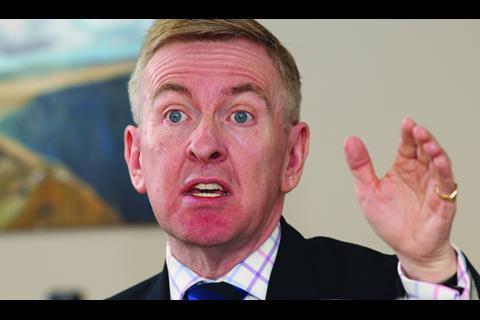
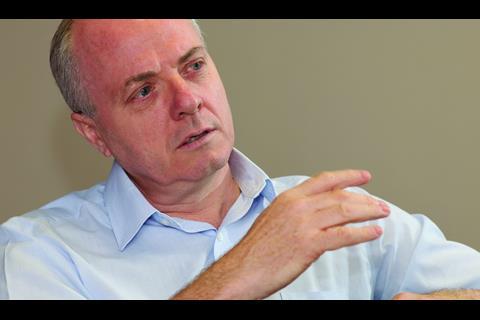
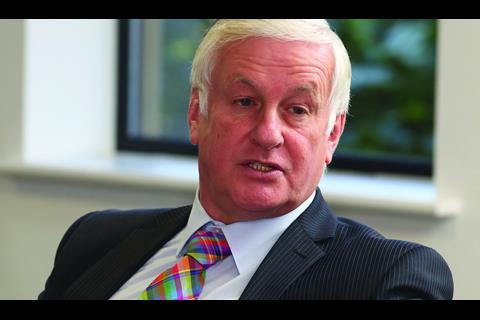


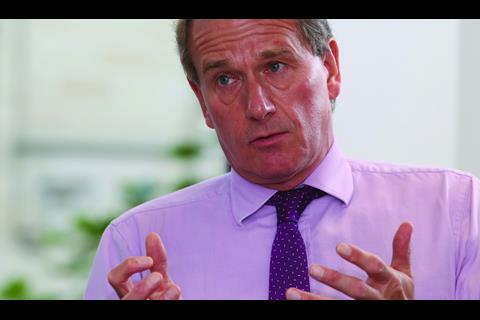

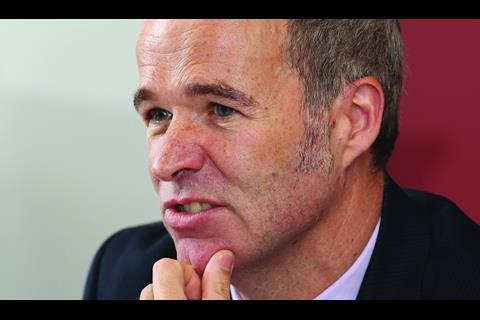
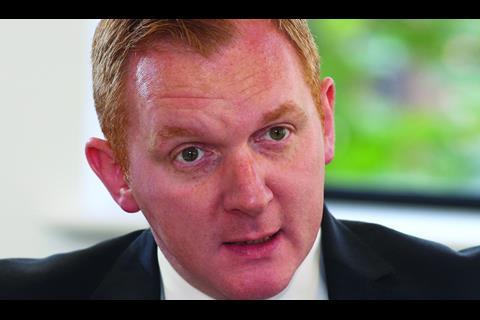






2 Readers' comments